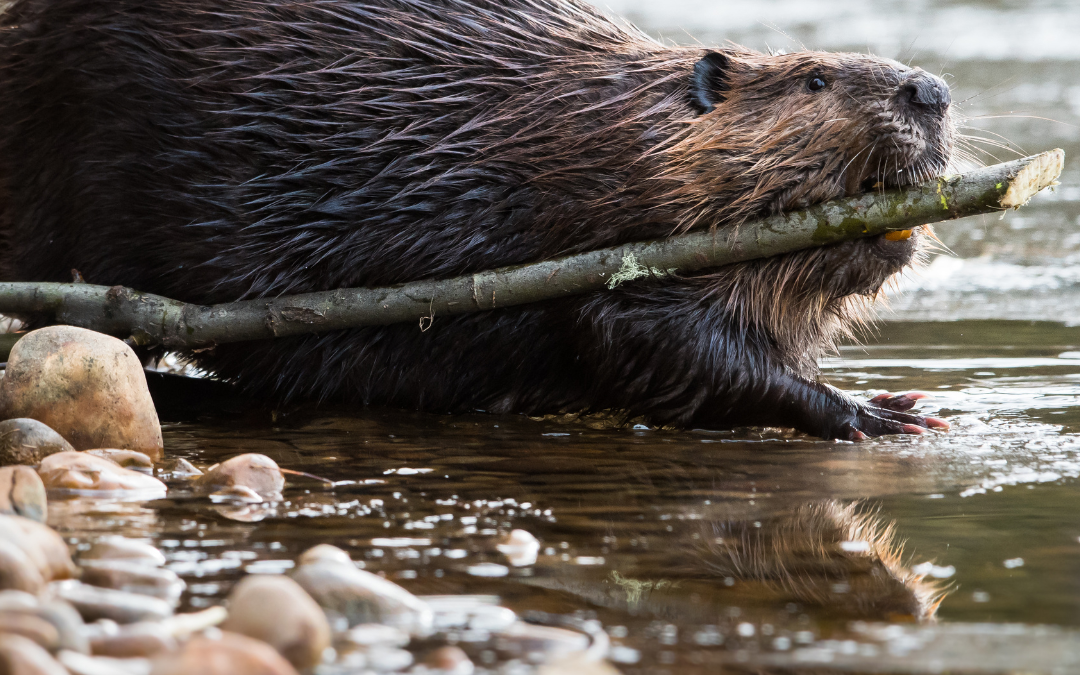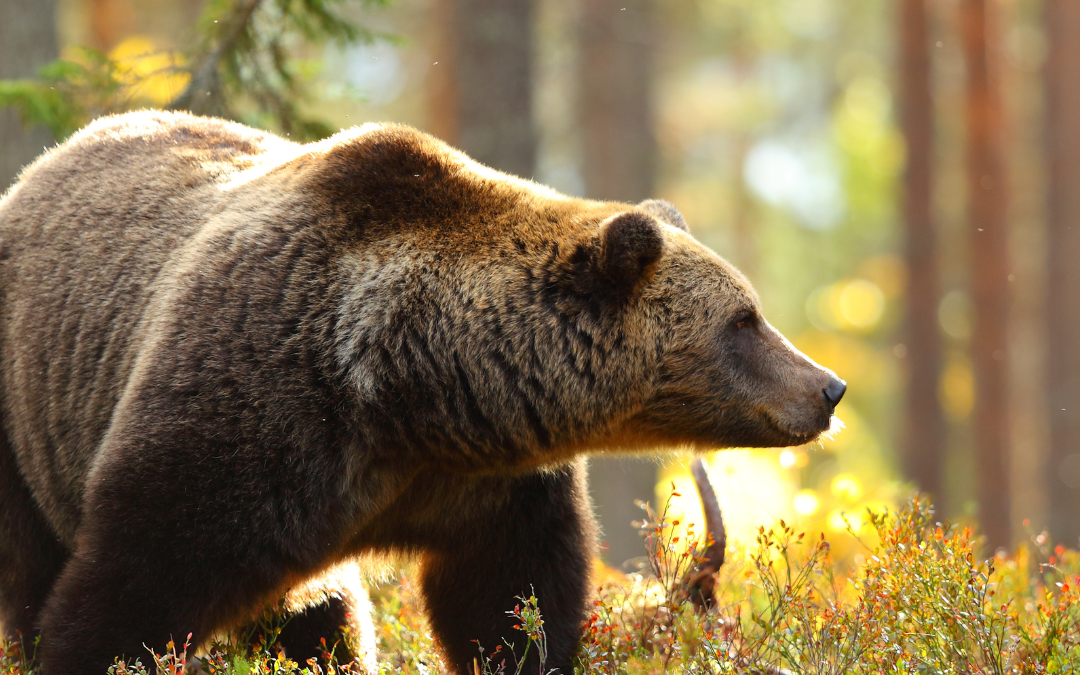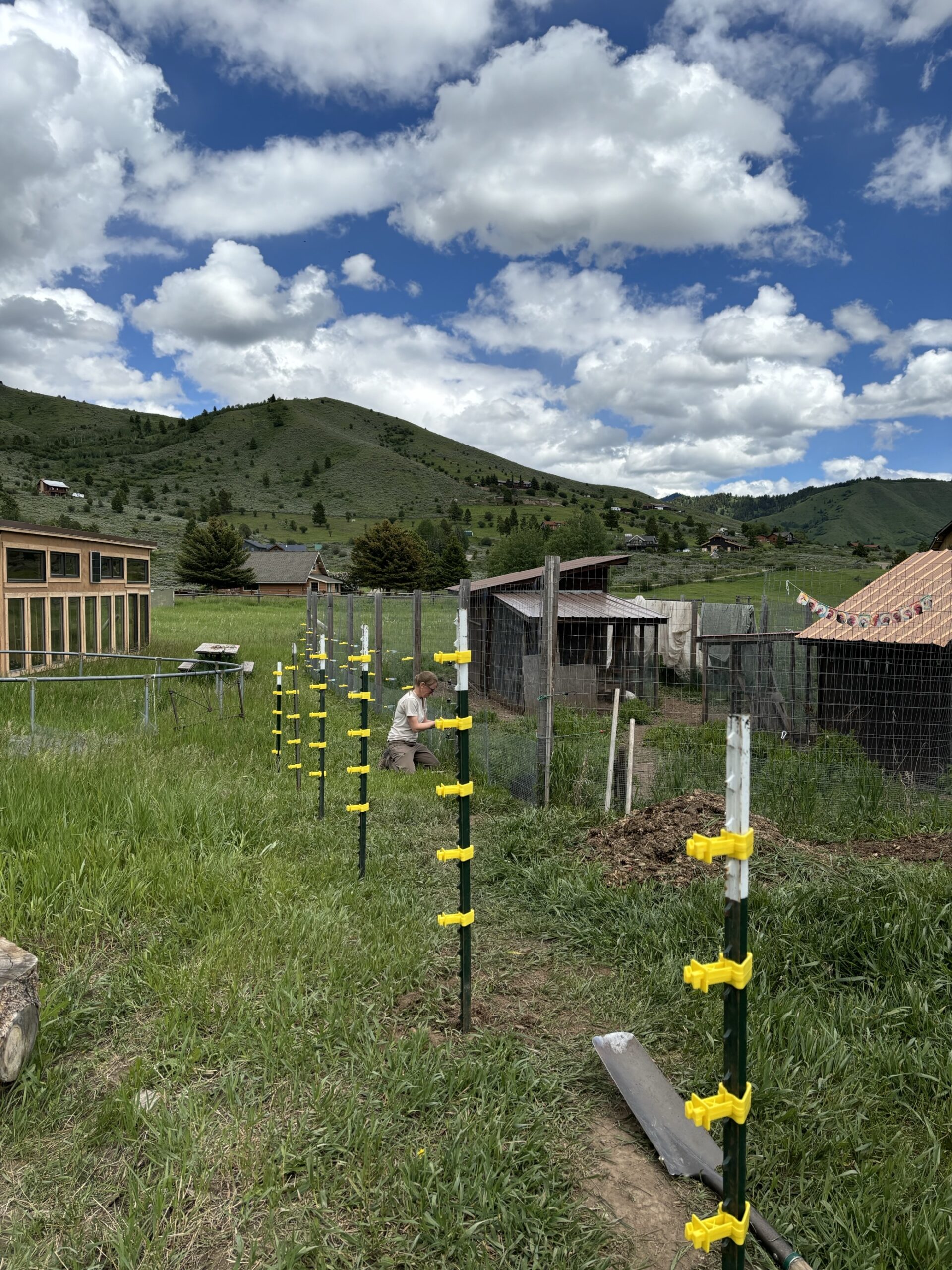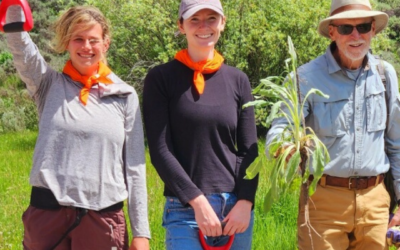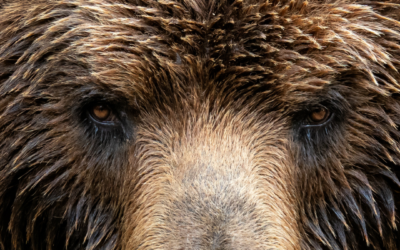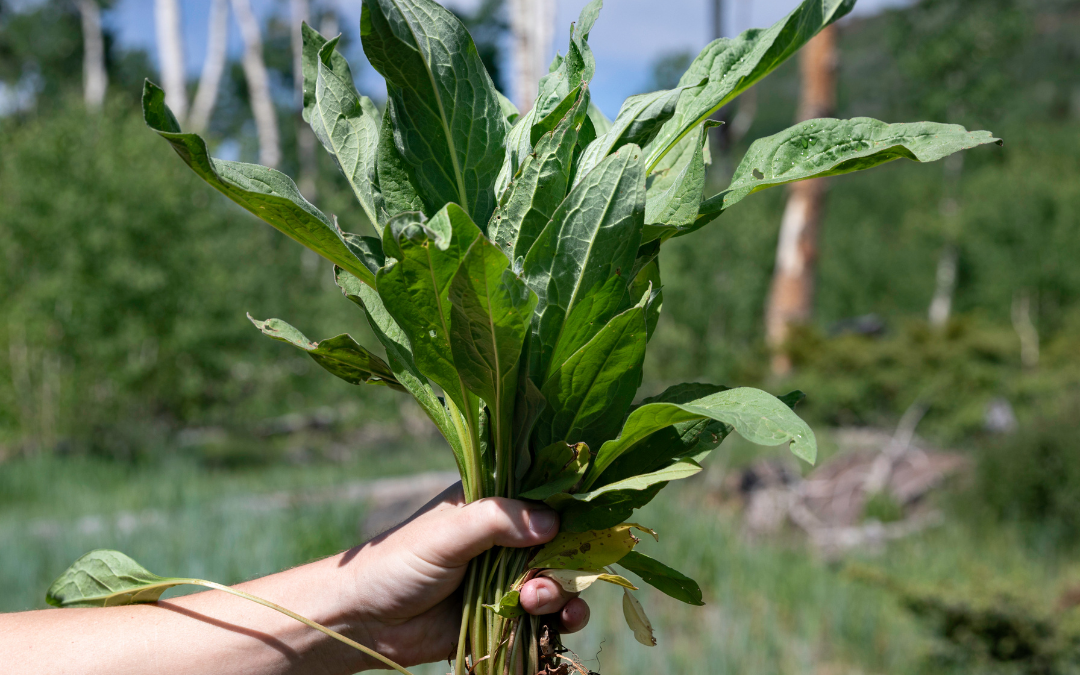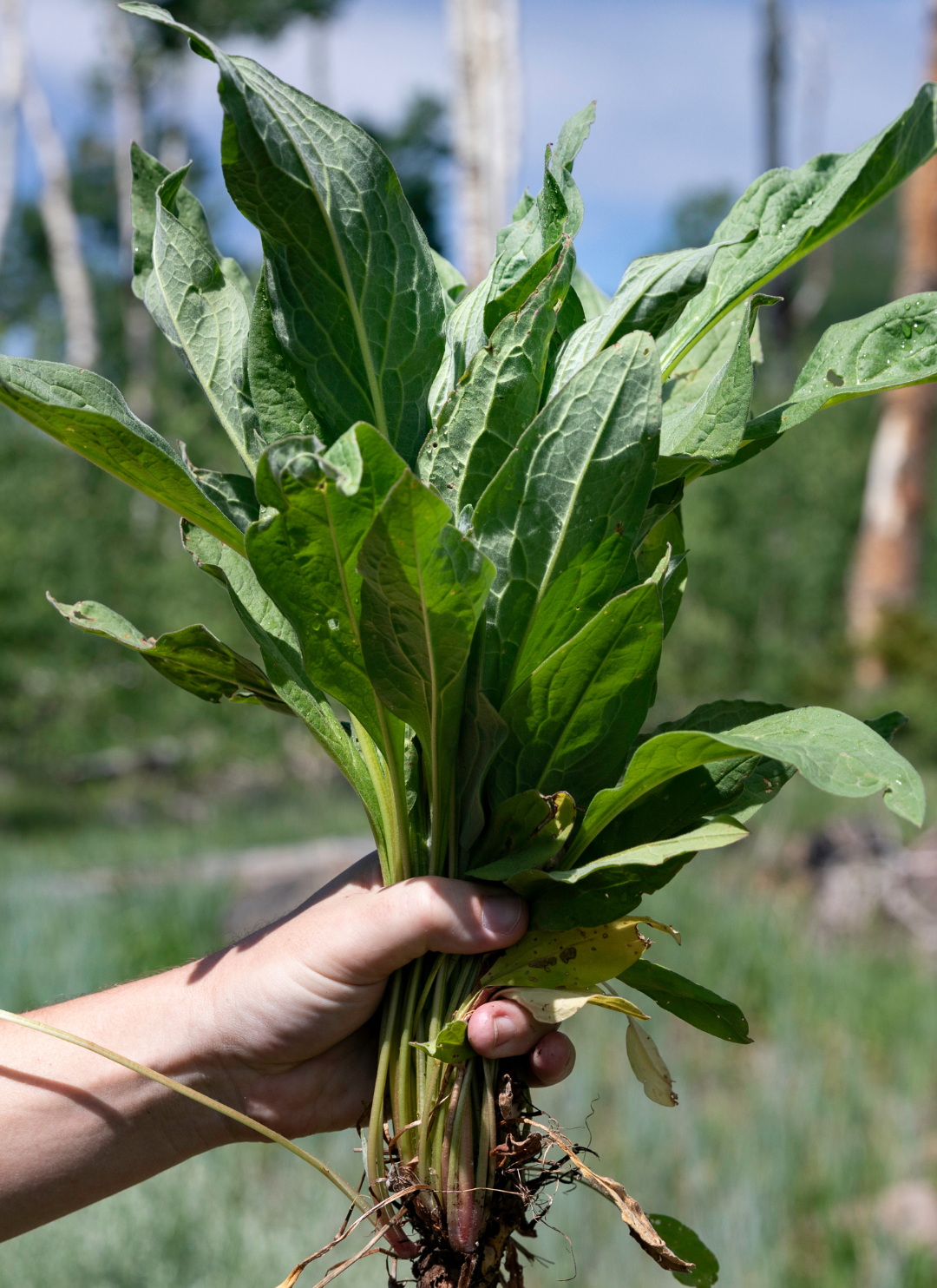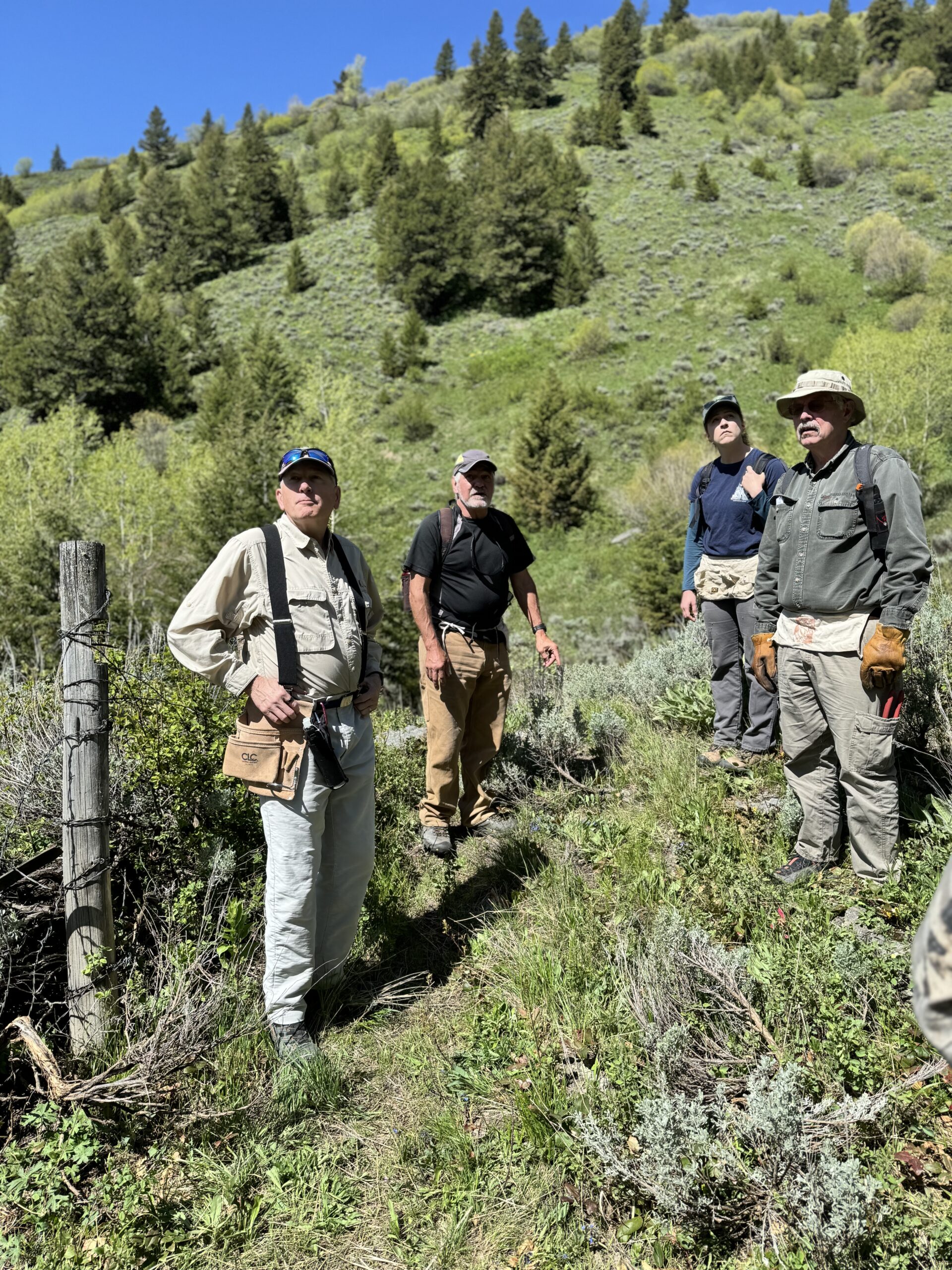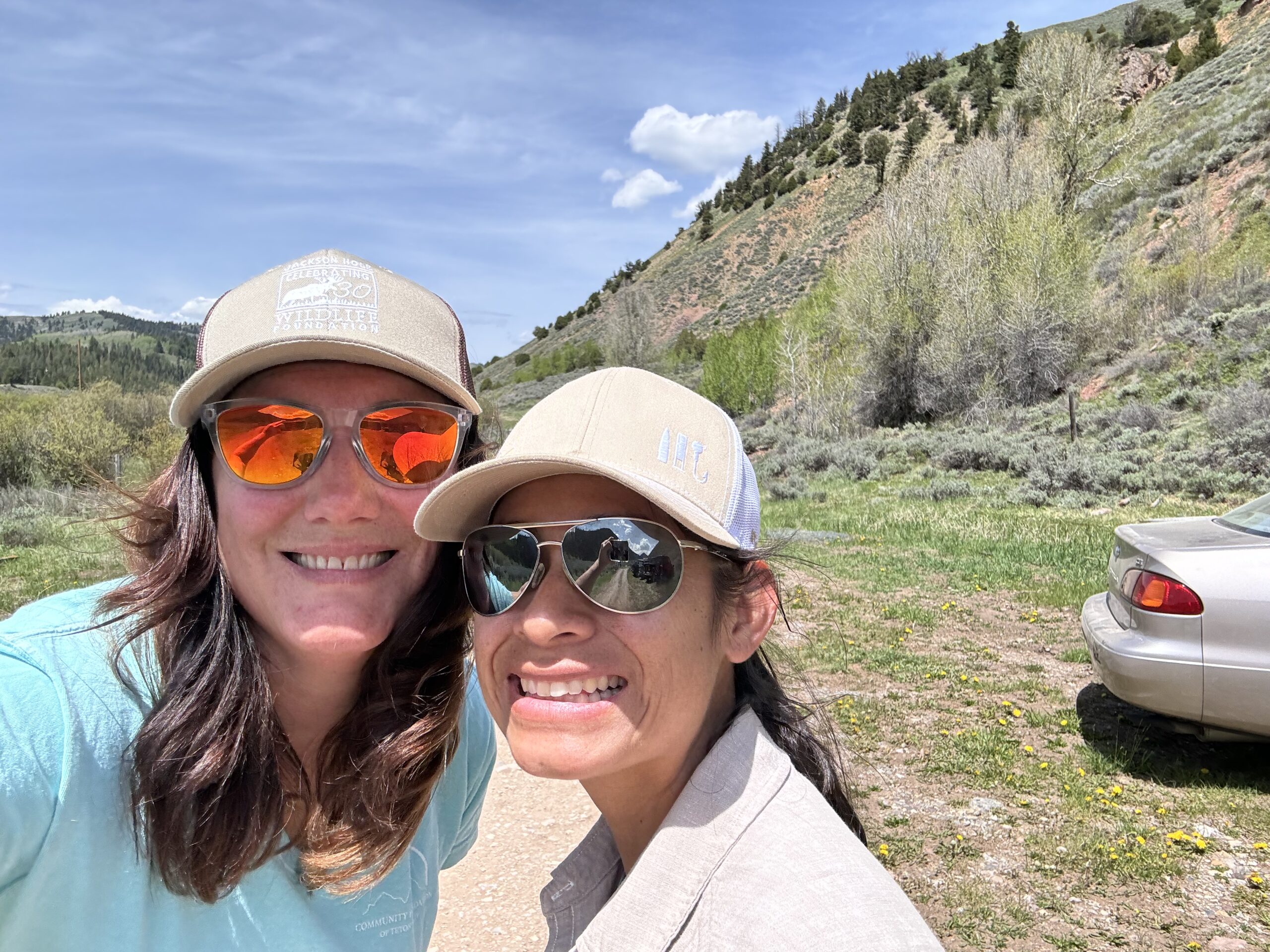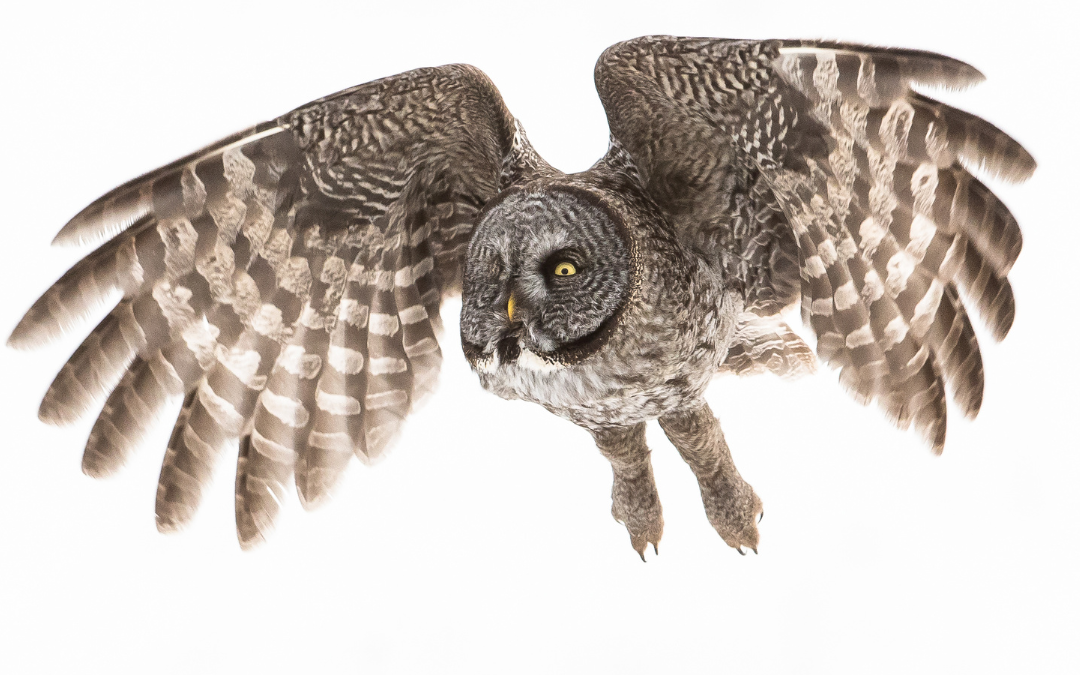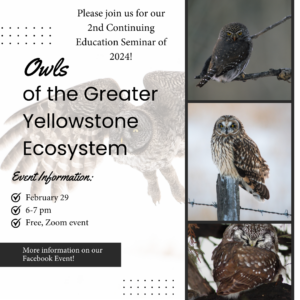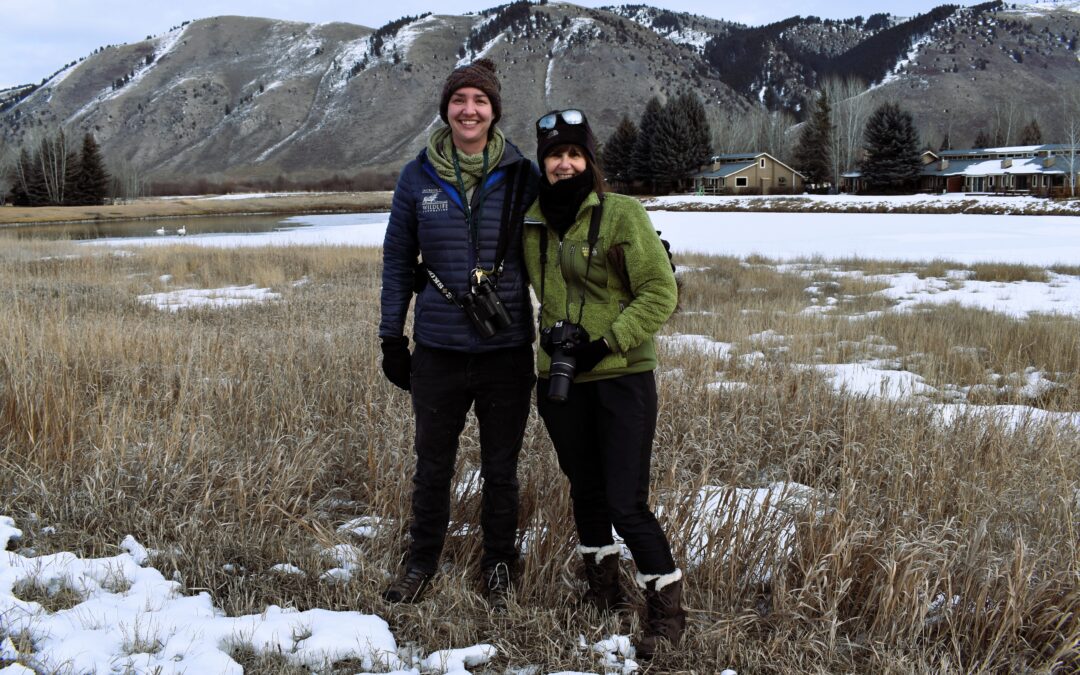
by jhwildlife | Jan 6, 2024 | Blog
By Hilary Turner
The following is a story from Nature Mapping Jackson Hole. Citizen science is valuable because it engages community members in long-term data collection. Through the process of becoming involved in a monitoring project like Nature Mapping JH, folks learn more about their world, while contributing meaningful data that can have a broader impact.
In December of 2021, I received a phone call from a Nature Mapper who lives in the Rafter J Neighborhood. She was wondering if Nature Mapping data showed any strong trends in wildlife use of the area. Unfortunately, there was not enough data in the neighborhood to show any kind of trends, but I encouraged the person to continue Nature Mapping and to have her friends and neighbors email me if they were interested in contributing. So started my friendship with Gina Lipp, a neighbor of the person who had called, who soon reached out with interest in the Nature Mapping program. A resident of Rafter J since 1984 and wildlife enthusiast, Gina wanted to contribute data to further understand how wildlife use the Rafter J Neighborhood.
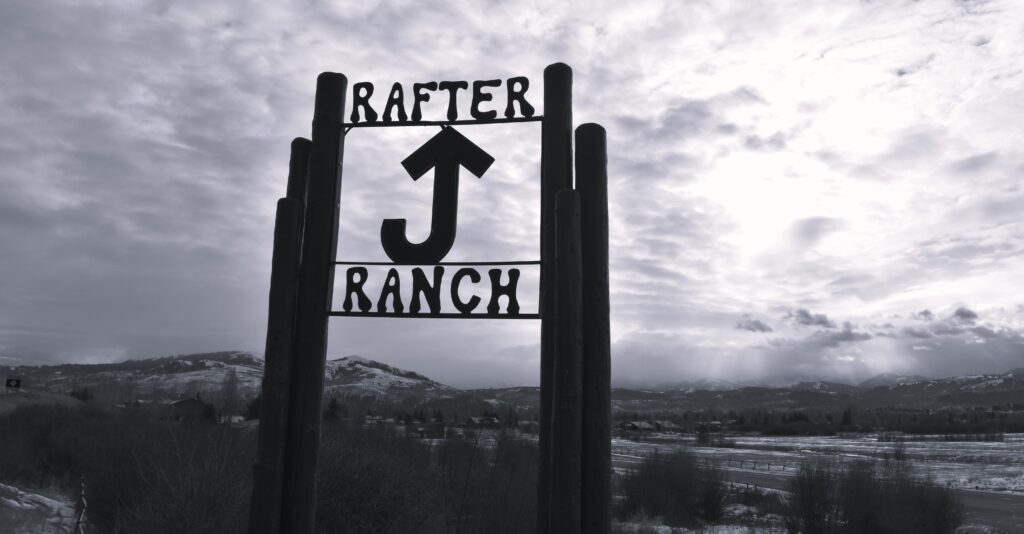
The Rafter J neighborhood south of Jackson was developed in the 1980s and early 90s. Wildlife corridors through the neighborhood and a thriving Flat Creek riparian habitat have made it a place that many wild animals can call home, alongside their human neighbors.
Gina took my virtual Nature Mapping training in Jan of 2022. About a week after the training, she photographed a Great Gray Owl in the neighborhood, and made one of her first Nature Mapping observations. After this, she reached out to me regularly with questions about the variety of wildlife she was seeing in her neighborhood. She had a camera, so had photos of everything and I was able to help her with identification over email. However, I am a firm believer in the “Teach a person to fish” philosophy, so I offered to meet Gina down at Rafter J and go for a walk to help with some of her bird and wildlife ID questions. As many know, my interest and skill set are geared towards birds, which are one of the most ubiquitous and accessible groups of wildlife, yet relentlessly underappreciated in the Greater Yellowstone Ecosystem (GYE).

Hilary and Gina began recording Nature Mapping observations in early 2022. Documenting wildlife sightings over a three-mile walking route approximately twice per month, Gina has contributed to citizen-science by making well over 700 wildlife observations in her neighborhood.
I met Gina on a chilly morning in early February of 2022. We started off on our birding walk from the Rafter J office and almost immediately spotted Green-winged Teal in the shallow sloughs of Flat Creek. Farther down the road, some small birds flushed from the ground into the willows. As I lifted my binoculars, a sense of excitement passed over me; the birds were American Tree Sparrows! These adorable songbirds nest in far northern Canada and Alaska and are only present in the GYE during winter. As hardy as they are, they can be very difficult to find during the coldest months of winter in Jackson. Yet here were three individuals, making a living in the Rafter J neighborhood in mid-February. We ended up finding 13 species of birds together that cold morning. Gina Nature Mapped everything we saw and we parted ways, happier for having enjoyed the wildlife in the suburban neighborhood together that morning.
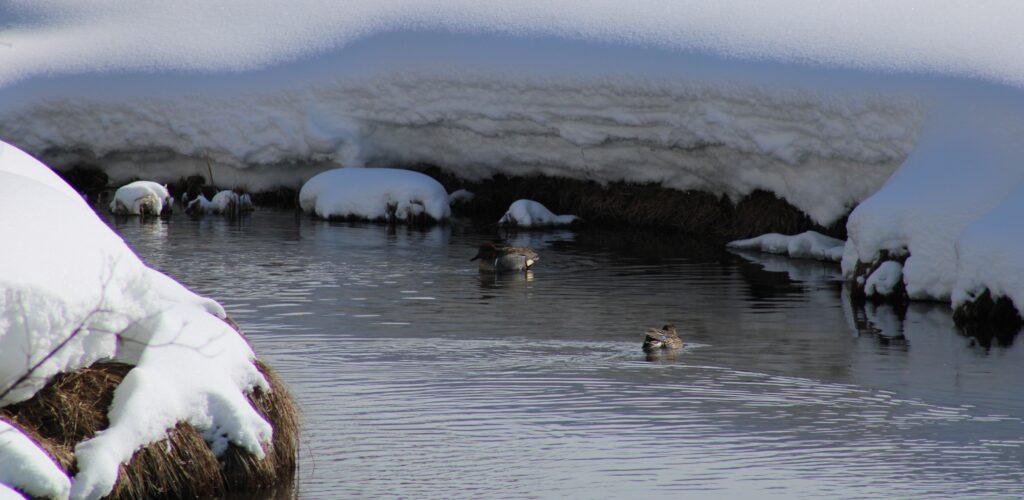
Green-winged Teal photographed on Flat Creek in mid-winter. Green-winged Teal are a dabbling duck found year-round in the Jackson area. Photo: Gina Lipp.
The next year went by and Gina continued to collect data in the neighborhood, but I noticed her reports became fewer and fewer throughout the year. This reduction in reporting is typical with Nature Mappers but I had seen Gina’s enthusiasm and thought if I continued to engage with her, perhaps she would continue reporting. At the start of 2023, I emailed her about the new Nature Mapping app and asked her if she would like to walk again in Rafter J to reinvigorate her Nature Mapping. A clear morning, free of snow, finally arrived and we walked again, this time digging up 18 species. Our list included an American Dipper using Flat Creek and a flock of Bohemian Waxwings relishing the leftover fruit of a crabapple tree in the neighborhood. I told Gina that we should aim to walk again in April, to see what we could find as spring migration got underway. My goal was to understand how birds use the neighborhood during different times of year and I knew Gina was also excited about this.
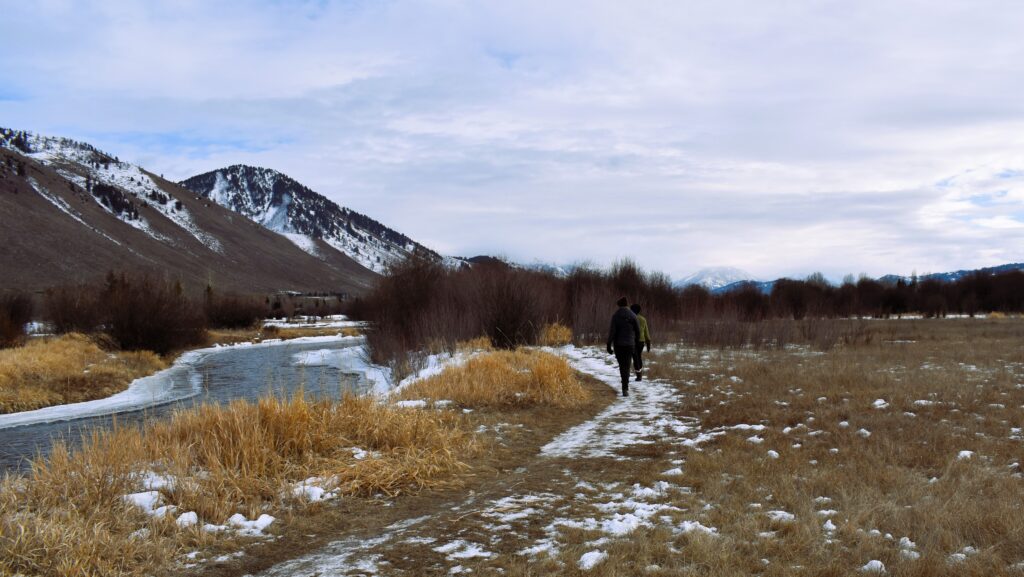
The local homeowner’s association controls much of the land along Flat Creek through Rafter J, creating a defacto “development setback.” Native vegetation within the riparian zone along the creek allows the area to retain ecological functionality. Birds, mammals (including people!), reptiles, and amphibians all make use of the habitat along the creek.
April came and so did the birds. I was stoked to see what had arrived and to my delight, the Osprey pair were already fixing up their nest for another round of raising chicks atop a platform installed by the neighborhood near Flat Creek. A pair of Northern Harriers coursed low over the open space near the wetland habitat restoration area in the middle of Rafter J. I wondered aloud if they might be breeding in the neighborhood. We spotted eight species of waterfowl using the creek and ponds as stopover habitat during their spring migration. I became ecstatic when I heard a Virginia Rail kiddick-ing from the cattails of the restoration area. A Fox Sparrow sang its glorious tune from the willows along Flat Creek. Tree Swallows investigated nestboxes and I was thrilled to detect five finch species as we meandered through the neighborhood. Our three mile walk yielded an incredible 37 species of birds on April 28. I made plans with Gina to walk again in June, this time to assess the community of breeding birds present in the Rafter J neighborhood.
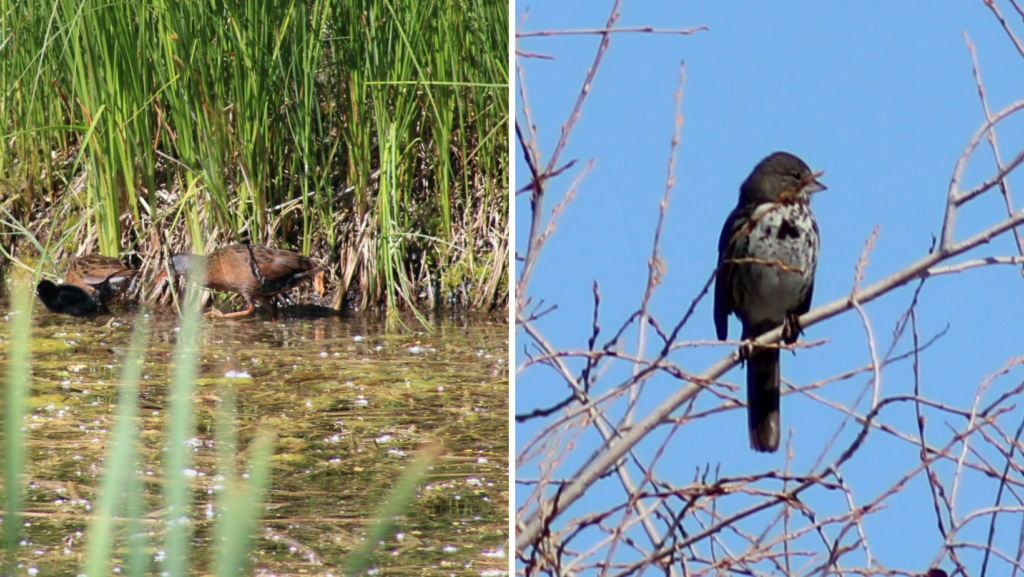
April sightings included elusive Virginia Rails and their chicks (left) in the habitat restoration pond and a Fox Sparrow (right) along the creek. Photos: Gina Lipp.
Gina continued Nature Mapping on her own as well. Everything she reported was easily verifiable with photo documentation. She observed a variety of wildlife using the Flat Creek Corridor and wetland habitat, including beaver, muskrat, moose, coyote and boreal chorus frog. Other members of the neighborhood community became involved as well. Local photographer and JHWF supporter Anna Knaeble became trained in 2023 and mapped Northern river otter and Western toad in Rafter J, both Wyoming Species of Greatest Conservation need and species that are Nature Mapped in relatively low densities in Teton County. Many Rafter J neighbors became excited when a group of White-faced Ibis dropped into a flooded open space of the neighborhood for a few days to refuel during spring migration. The neighbors recognized the importance of the open space in their neighborhood when they observed the birds utilizing it in this way.
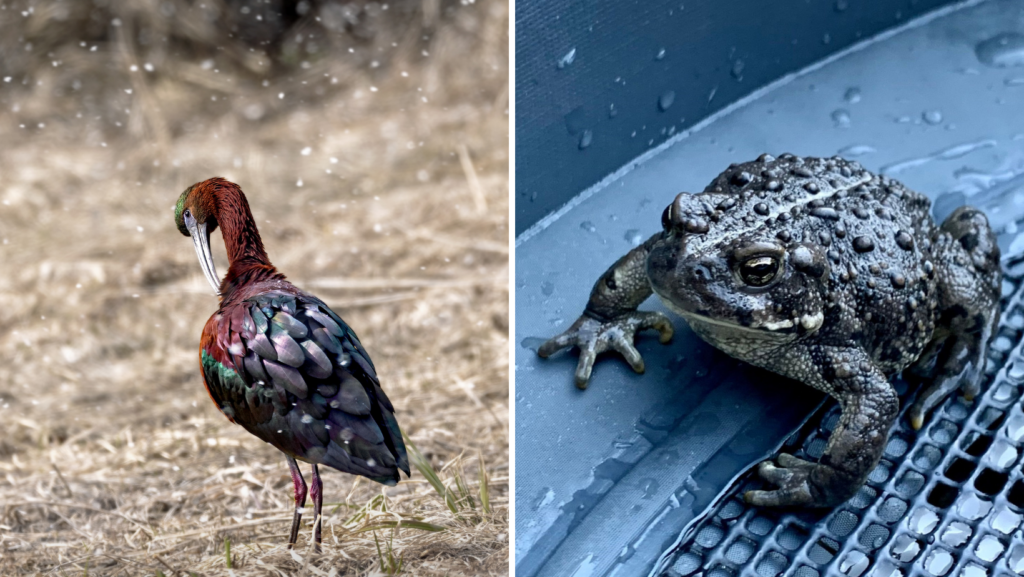
White-faced Ibis and Western toad, both Species of Greatest Conservation Need in Wyoming. Some ibis stopped by to dazzle residents during its spring migration, taking advantage of flooded pasture along Flat Creek near the entrance to Rafter J. Photos: Anna Knaeble.
In June, Gina and I returned to our walking route. Indeed, the avifauna had changed again; the breeding season was now in full swing! The dawn chorus included Savannah Sparrows chiming from the edges of the neighborhood, Black-headed Grosbeaks sweetly serenading from the willows, and Bullock’s Orioles chattering from the tops of residential cottonwoods. Male Calliope Hummingbirds zipped around defending territories with their impressive aerial displays and American Robins carried food to young in nests. Many fewer waterfowl were present, as most had continued their journeys to northern breeding grounds, but we heard another Virginia Rail and Gina spotted a Sora this time. These two rail species do not usually persist outside of intact marsh habitat and their presence during the breeding season is indicative of a functioning wetland ecosystem within the Rafter J neighborhood! Willow Flycatchers sang from the Flat Creek Corridor and we watched a sweet female Yellow Warbler building her nest, low in the willows. We documented 43 bird species on this walk, confirming a robust suite of breeding songbirds in the neighborhood.
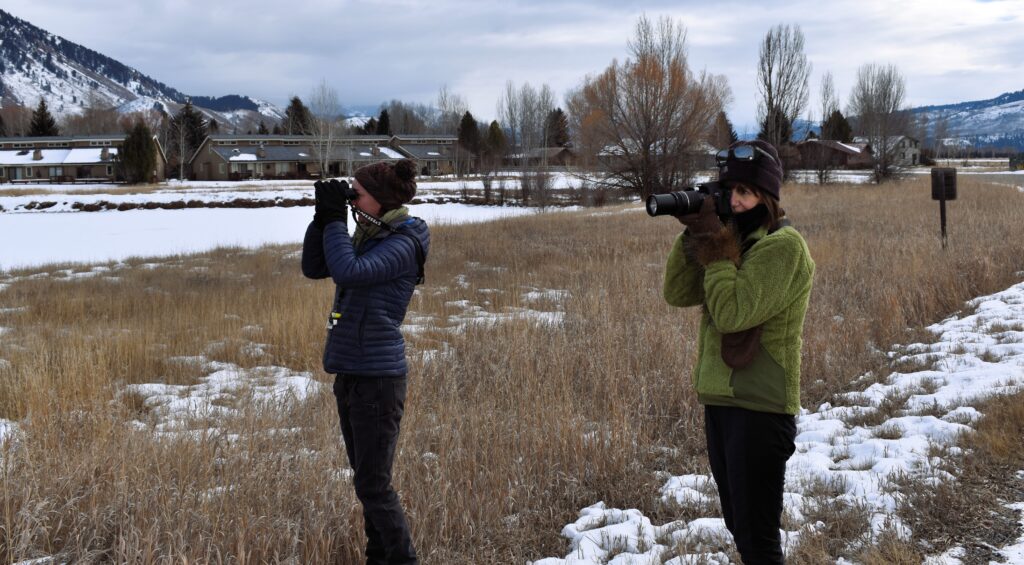
Gina and Hilary watch and photograph waterfowl on a Rafter J pond. This pond is believed to be geothermally heated which keeps portions of it ice-free throughout the winter. Waterfowl such as Trumpeter Swans, Barrow’s Goldeneye, and Mallards make use of the open water.
August rolled around and once again I contacted Gina. This time, I wanted to see what was starting to move south. Fall is my favorite time to go birding in the West and believe it or not, late August is the start of peak fall migration. I knew our walk was going to be great this time. Following the breeding season, there is simply more avian biomass on the landscape and because so many of the birds are young, the likelihood of finding something unusual increases by quite a bit. We met on August 28 and it was foggy to start. Initially, I was bummed at the conditions, but as the sun started to cut through the fog, Rafter J came alive with activity. A Lincoln’s Sparrow skulked in the willows, popping out to allow us brief looks. A Western Wood-Pewee sallied out over Flat Creek, capturing insects and returning to its perch long enough for Gina to photograph it. We encountered six warbler species, a decent number for a single location-outing in Jackson. A Swainson’s Hawk circled overhead, preparing for its annual journey to Argentina. Ruby-crowned Kinglets alerted us to their presence with their chiddit call notes and Cedar Waxwings swirled throughout the neighborhood with their newly fledged young. It was the best outing yet – we detected 54 species throughout the neighborhood that day!

In August, Hilary and Gina record six warbler species on their walk, including this Yellow Warbler. Yellow Warbler is the most common warbler in Jackson during summer months, and can be found without too much work in a variety of habitats, from willows, to wet thickets, to open woodlands. Photo: Gina Lipp.
During our five walks, Gina and I documented a whopping 83 bird species in Rafter J! Even better for me, however, was watching Gina become a keen observer of nature as she grew her knowledge of Jackson’s wildlife. She improved vastly in her wildlife identification skills since our first outing and she also found some amazing things. In mid-July, she witnessed a Virginia Rail emerge from the cattails in the habitat restoration area and then another, followed by two small black fuzzballs – baby Virginia Rails! We suspected they were breeding at the site, but now had ironclad evidence. Since Jan 2022, Gina has made over 700 wildlife observations in her neighborhood. Mapping her three-mile walking route approximately twice per month, her wildlife observations have exact locations, showing where wildlife use the landscape in the neighborhood. Her hard work over the last two years has breathed new life into the Nature Mapping database in the Rafter J neighborhood. Although Gina is dedicated, she is not alone. Since 2016, Rafter J residents have Nature Mapped 118 species in the neighborhood, including 20 Species of Greatest Conservation Need, a state-level designation by Wyoming Game and Fish Department (WSGCN).

Occurrences of Wyoming Species of Greatest Conservation Need (WSGCN) near Rafter J are shown with colored dots (left). Trumpeter Swans (right) are an example of a WSGCN and utilize the Rafter J pond and nearby wetlands as seasonal habitat and during migration (SEE SWAN SIGHTINGS MAP). Photo: Gina Lipp.
As more development occurs to meet the needs of the growing community, we have a responsibility to consider those who have no voice. Nature Mapping data can give wildlife a voice. The picture we now have of landscape use by wildlife in the Rafter J neighborhood can inform responsible development along Flat Creek, such as Northern South Park, and other areas. Through the data Gina and others have collected in Rafter J, we see that robust development setbacks from Flat Creek and wildlife corridors through the neighborhood have made it a place that many wild animals can call home, alongside their human neighbors. Nature Mapping data show that the neighborhood’s riparian corridor and wetland complex are healthy enough to sustain a very nice suite of riparian breeding songbirds during the summer and make it one of the most bird-rich areas in Jackson Hole in the winter.
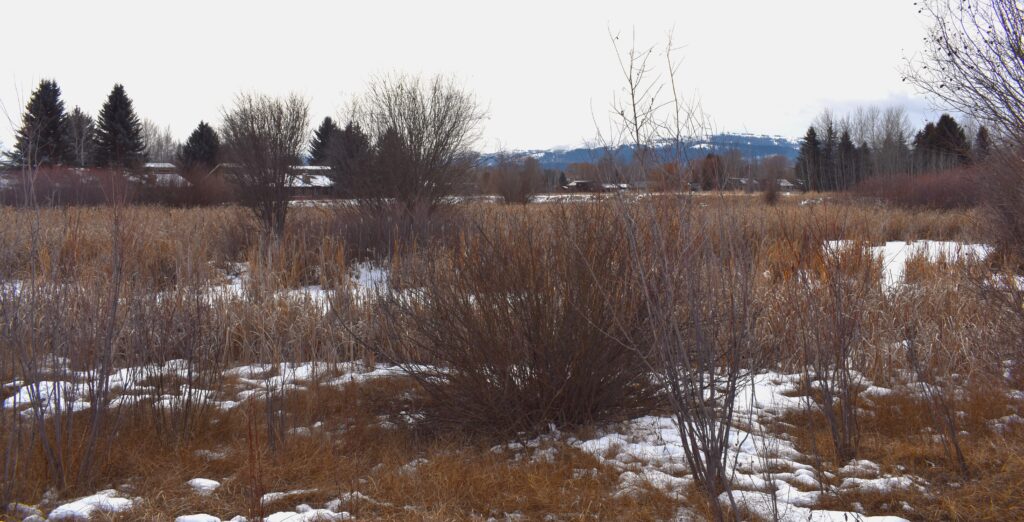
Emergent wetland of the habitat restoration area adjacent to Flat Creek form a valuable habitat type for species like Northern Harrier, Sora, and Virginia Rail, all of which Hilary and Gina spotted here. Sora and Virginia Rail rarely occur outside of intact marsh environments such as this one.
Rafter J residents are fortunate to live alongside such a healthy community of wildlife, but this also comes with the responsibility of stewardship as neighbors to wildlife. Young wild animals are extremely vulnerable to predation by domestic animals like cats and dogs. Keeping cats indoors and leashing dogs while walking through the neighborhood are simple ways to protect the wildlife that also call this space home. Both grizzly and black bears have been documented in Rafter J. Use of bear-resistant trash containers and securing other attractants can be the difference between life or death for these animals. Making conservation-minded decisions, even in a small neighborhood, can have many far-reaching and positive impacts!
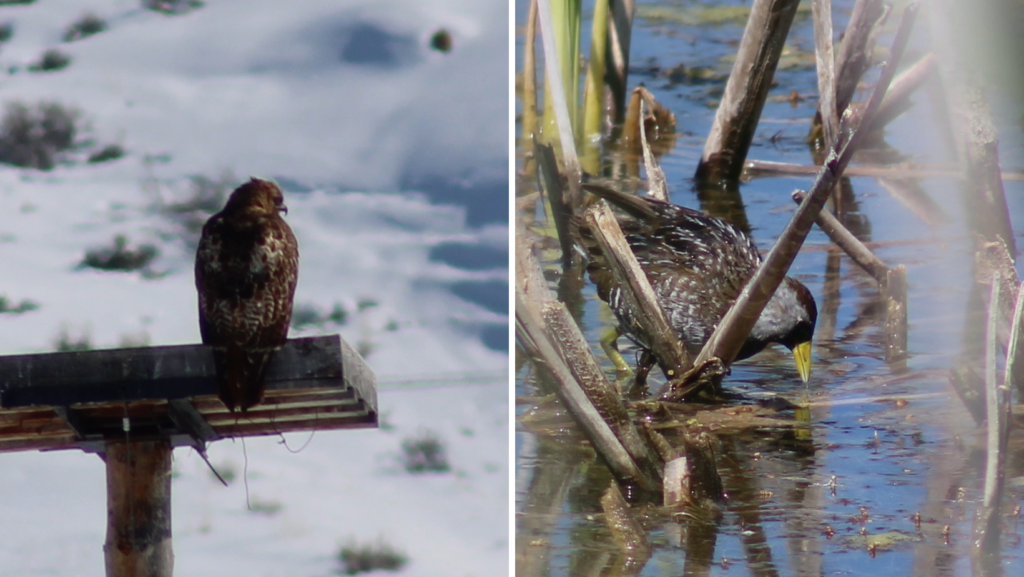
A Red-tailed Hawk perches on a nesting platform on the east side of Rafter J (left). A secretive Sora was a surprise find by Gina in the habitat restoration pond in the summer of 2022. Photos: Gina Lipp.
Gina’s work in the Rafter J neighborhood shows that with commitment and dedication, Nature Mapping can illustrate the complete annual cycle of wildlife – even in developed areas! And if data are rigorously collected, they can sometimes be used to inform responsible development and aid in wildlife conservation.
I asked Gina to speak to the importance of Nature Mapping and this is what she said, “Living in the Greater Yellowstone Ecosystem is a blessing and a responsibility. With all its beautiful wildlife, there is no other place like it in all of North America. Nature Mapping is so important to help us recognize, learn, appreciate, and protect the wildlife and their habitat.”
What will you Nature Map in 2024?
